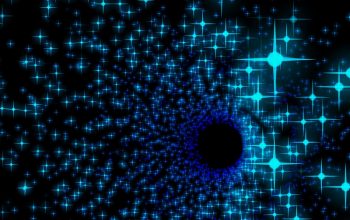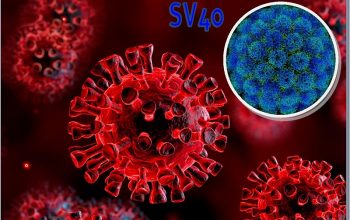by Georgi Gladyshev
The origin of life can be explained through the study of thermodynamics of the universe’s evolution. Origin of life and its evolution are the result of action of laws of hierarchical thermodynamics of complex systems. Thermodynamics investigates systems which can be characterized by state functions. The separation of biological systems into individual hierarchies of structures allows us to study the processes in them independently of the processes that take place in other hierarchical structures.
I am sure that the hierarchical structure of thermodynamics and “the principle of substance stability” coordinate the formation of all structures in evolution. However, it is too difficult to describe all the successive steps of evolution. We should have the experimental data. Such data are now available only for the initial stages of the biological evolution. For example, I would argue that the genetic code must be the same (or the like) in the universe. Why? The reason is related to the fact that purines and pyrimidines are comparatively chemically unstable substances (in the chemical energy scale of transitions). However, their supramolecular interactions lead to the relatively stable supramolecular structures (in the energy scale of supramolecular interactions). This is a consequence of the principle of the stability of the substance. The same situation should be in the case of fragments of sugars and phosphoric acid in the formation of RNA and DNA strands. These data are very reliable, but they are qualitative data and make exact calculations difficult, because the model is based on several assumptions. Read my article for more on this topic.
Criterion of evolution
The approval about the reduction of the entropy of living systems as a result of biological evolution is incorrect. The criterion of evolution of living system is the change (during evolution) of the specific free energy (Gibbs function, G) of this living system formation. The evolution of living system takes place against the background of flows of energy (e.g., light, energy of physical fields) from the environment. It increases its specific free energy (primarily chemical free energy). At the same time, the specific free energy of this living system is decreased as a result of spontaneous chemical and supramolecular processes in this system. The increase of supramolecular stability of living system during evolution and aging is characterized by the value of decrease of specific supramolecular Gibbs energy of the formation of its structure. It is the main criteria of evolution and aging of living systems.
Thus, the total change in the specific free energy of a living system is composed of two parts: (1) The change of free energy due to the inflow of external energy (G1> 0); and (2) The change of free energy due to spontaneous transformations in the system (G2 < 0). The evolving system constantly adapts to a changing environment. The principle of substance stability contributes to this adaptation.
Thermodynamics of evolution obeys the generalized equation of Gibbs (that is the generalized equation of the first and second laws of thermodynamics)*. Biological evolution and the processes of origin of life are well described by the hierarchical thermodynamics, established on the firm foundation of theory of JW Gibbs. Our theory created without the notion on dissipative structures of I. Prigogine and negentropy of L. Boltzmann and E. Schrodinger.
“Thermodynamics serves as a basis for optimal solutions of the tasks of physiology, which are solved by organisms in the characteristic process of life: evolution, development, homeostasis, and adaptation. It is stated that the quasi-equilibrium thermodynamics of quasi-closed complex systems serves as an impetus of evolution, functions, and activities of all levels of biological systems’ organization. This fact predetermines the use of Gibbs’ methods and leads to a hierarchical thermodynamics in all spheres of physiology. The interaction of structurally related levels and sub-levels of biological systems is determined by the thermodynamic principle of substance stability. Thus, life is accompanied by a thermodynamic optimization of physiological functions of biological systems. Living matter, while functioning and evolving, seeks the minimum of specific Gibbs free energy of structure formation at all levels. The spontaneous search of this minimum takes place with participation of not only spontaneous, but also non-spontaneous processes, initiated by the surrounding environment.”
Chirality in the living world
From a general point of view, we can make the statement. We can assume that the principle of substance stability is asymmetric. It sets the time axis for the development of hierarchical structures in the universe. The asymmetry of principle is similar to “the asymmetric action” of the second law, which also sets the time axis of evolution. It follows that the principle of substance stability respect to the pairing of complementary nucleobases requires the known chirality of ribose and deoxyribose in chains of nucleonic acids.
*) The generalized equation of Gibbs (See: http://creatacad.org/?id=57&lng=eng
http://gladyshevevolution.wordpress.com/article/thermodynamic-theory-of-evolution-of-169m15f5ytneq-3/ )
About the Author
Georgi Pavlovich Gladyshev (born September 19, 1936 in Alma-Ata) is a Russian physical chemist and thermodynamicist known for his Gibbs free energy thermodynamic theory of evolution and for his anti-aging theories of foodstuffs. He is the author of more than five hundred scientific papers. His seminal article is the 1978 “On the Thermodynamics of Biological Evolution” published in the Journal of Theoretical Biology. Interestingly, at the time of publication this theory was considered rather controversial. In recent years, however, many authors have begun to utilize a Gibbs free energy perspective of evolution. His 1997 book Thermodynamic Theory of the Evolution of Living Beings, argues that evolution of living beings is governed by the tendency for quasi-equilibrium, semi-closed, hierarchical living systems to evolve in the direction that tends to minimize the Gibbs free energy of formation of each structure. In 2006, he was one of key speakers at the 14th annual International Anti-Aging Congress and Exposition in Chicago. Visit the following links to see more of his work:
http://endeav.net/news.html
http://gladyshevevolution.wordpress.com/
http://www.mdpi.org/ijms/papers/i7030098.pdf
http://ru.scribd.com/doc/87069230/Report-Ok-16-11-2011


